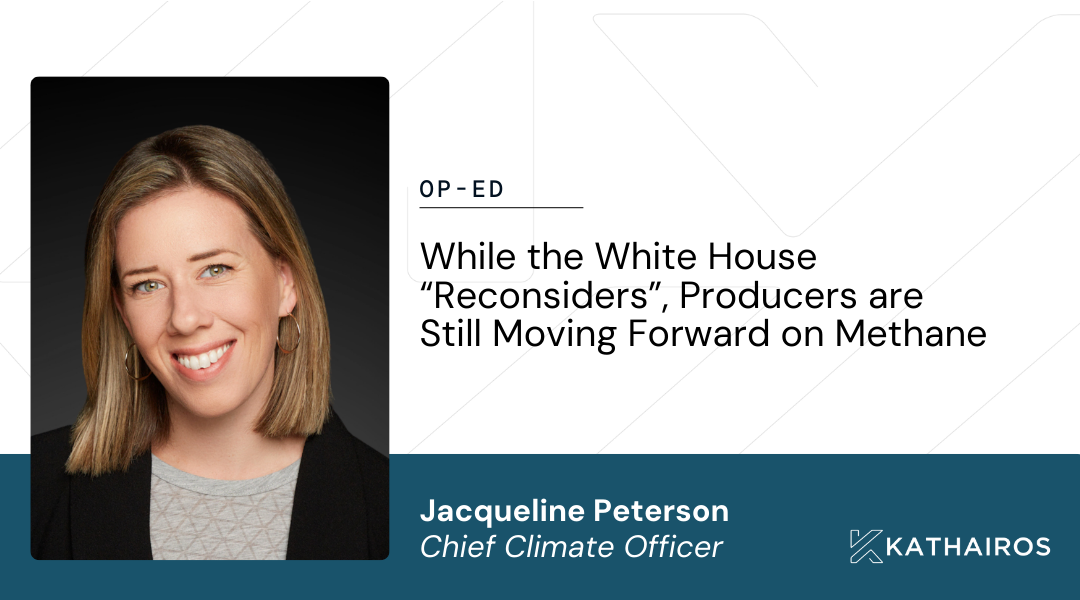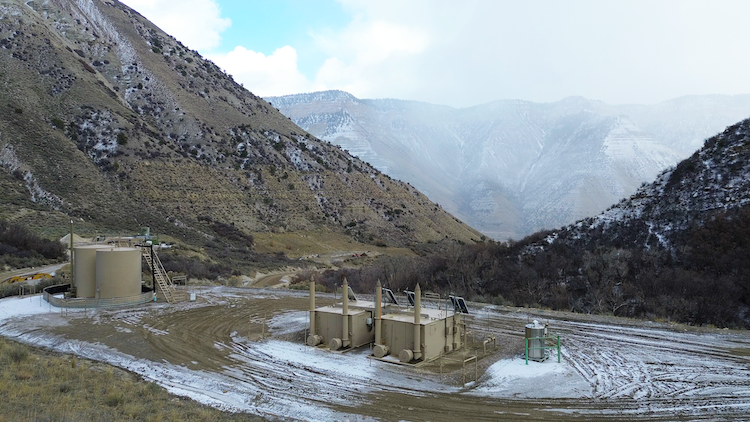
Kathairos has emerged as the leading North American solution for methane elimination from pneumatics, with more than 1,000 systems in operation across North America and over 40 major oil and gas producer partners.
In this post
In an era where climate crisis impacts are increasingly felt globally, the U.S. has taken a decisive step with its Final Rule at COP28 in Dubai, setting a precedent in the oil and gas industry.
Much like the emerging trend of net-zero commitments by governments and businesses, this EPA-led regulation targets a near 80% reduction in methane emissions by 2028, echoing a broader call for environmental accountability.
The rule’s intricate approach, including the pioneering "Super Emitter Program" for third-party monitoring, mirrors the growing necessity for precise emissions tracking – a challenge that has historically been complex due to inconsistent reporting standards. By mandating rigorous monitoring and zero emissions for key equipment like process controllers and pumps, the rule not only aligns with the escalating urgency for transparent and accountable climate action but also sets a benchmark for the industry, much like the European trend towards mandatory sustainability reporting and the increasing market for carbon management systems.
This decisive action by the EPA, akin to the sweeping corporate sustainability efforts seen in companies like Apple and BP, represents a crucial shift towards integrating environmental responsibility into the fabric of industry operations. Chairman and President of BP Orlando Alvarez commented, “BP welcomes the finalization of a federal methane rule for new, modified and - for the first time - existing sources.”
It’s a clear signal that the future belongs to those who embrace sustainability, not just as a compliance measure but as a core business strategy, resonating with the sentiment that climate risk is unequivocally financial risk.
A few key elements of the Rule to note:
- Process Controllers: The Rule stipulates zero emissions of volatile organic compounds (VOC) and greenhouse gases (GHG), specifically methane, for all process controllers outside Alaska. Compliance can be achieved through various means such as using non-natural gas-driven controllers, routing vapors to a closed system, or other methods ensuring zero methane and VOC emissions.
- Pumps: The Rule establishes a zero-emission standard for all pumps, except in specific cases such as sites without electricity and with fewer than three natural gas-driven diaphragm pumps. In these exceptional cases, the standards depend on existing capabilities for emission routing. Pumps operational for less than 90 days annually are not considered affected facilities.
- Implementation Timeline:
- The Final Rule takes effect on January 31, 2024.
- States must submit their plans by December 1, 2025.
- Full industry compliance is required by November 30, 2028.
- Two additional progress steps involve the submission of a final control plan by November 2027 and a final compliance report by November 2028.
- Further Review: The EPA will also review the interaction of this Rule with the Methane Emissions Reduction Program from the Inflation Reduction Act and the monitoring/record requirements for nitrogen users.
The Final Rule at COP28 represents a pivotal shift in environmental practices, especially in methane mitigation for the oil and gas industry. At Kathairos Solutions, we're keenly attuned to these advancements, ensuring our innovative strategies are in step with these evolving global standards in sustainability and methane management.
Explore more posts from Kathairos
.jpg)
Decarb Digest, Issue 01: Discover Why Energy Leaders Aren’t Waiting on Washington

Op-Ed: While the White House “reconsiders”, producers are still moving forward on methane

